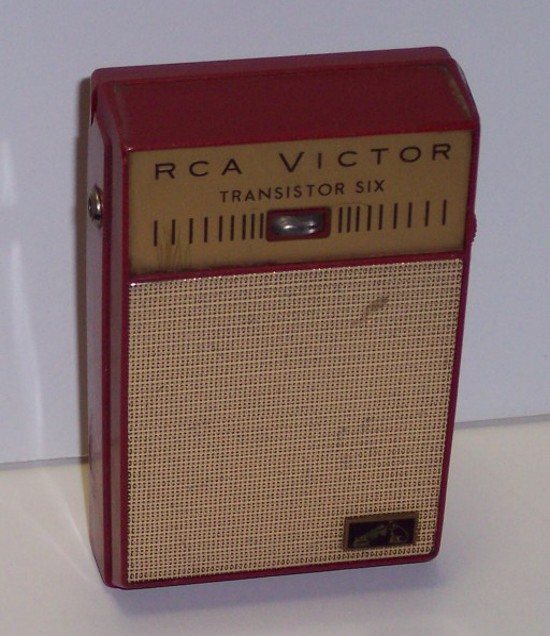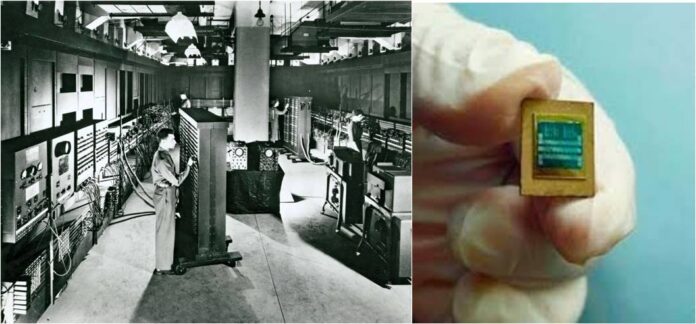Ellie Gabel has once more graced 21st Century Tech Blog with an interesting topic. This time she describes how our technological progress hasn’t involved making things bigger, but rather, miniaturization. Ellie is an associate editor at Revolutionized.
The Art of Miniaturization
The first computers filled entire rooms. Today, computing power ten thousand times more powerful, can fit into your pocket. Electronics everywhere have shrunk. In medicine, cars, satellites, and more, the devices we rely on are getting smaller. What has enabled miniaturization, and where do the limits lie?
A Technological Breakthrough
Miniaturization began with the invention of the transistor in 1947, a tiny control device that governs the flow of electricity in a circuit. Transistors are the key to modern electronics and can be found in everything from pacemakers to cell phones.
Before the transistor, radios, televisions and computers used bulky, bulb-like devices called vacuum tubes. They were large, inefficient, wasted a lot of heat and burned out quickly. With the dawn of the first transistors, hundreds of times smaller than vacuum tubes and far more durable came the first wave of miniaturization. The transistor radio was born. [Editor’s note: The transistor radio pictured below was one similar to what I had in my youth. It was battery-powered and portable, a welcome replacement for the cabinet radio that sat in my parent’s home.]
 Moore’s Law
Moore’s Law
Miniaturization didn’t stop with the invention of the transistor. Over time, transistors got smaller meaning more of them could fit inside a single device. One engineer, Gordon E. Moore, a co-founder of Intel, the semiconductor manufacturer, predicted in 1965 the rate of miniaturization which became known as Moore’s Law. It stated that the number of transistors that could be put on a silicon chip would double every two years. The first transistors were approximately one centimetre (0.39 inches) long. Today, they have shrunk to about 70 silicon atoms wide. A chip can squeeze in roughly two billion transistors in a space no bigger than a dime. And recent breakthroughs potentially may allow up to 20 billion transistors to fit into that kind of space.
How Small Can Devices Get?
Miniaturization has undoubtedly improved our lives enabling long-distance video chats, wearable medical devices, handheld GPS technology, automatic braking systems and much more. As devices shrink, however, engineers face new technical obstacles.
Battery Size
Lithium-ion (Li-Ion) batteries have been playing a key role in miniaturization. But batteries can only get smaller if they can pack more electrons inside them. Otherwise, the battery becomes a key delimiter in just how small devices can get.
Li-Ion batteries with metal anodes may be one way for batteries to become smaller in the future. Designers will have to take on the challenge of creating batteries while adhering to International Electrotechnical Commission (IEC) standards, such as IEC 62619, for safety reasons.
Atomic Interference
On the nanoscale — thousands of times smaller than a red blood cell — electronic components can behave strangely, with a single atom potentially disrupting the flow of electrons. This type of interference might barely affect a larger device, but it can cause serious issues for technology the size of a virus. That’s why transistors cannot keep shrinking forever.
It is, however, possible for engineers to harness the power of quantum computers which don’t use transistors. These devices would use quantum phenomena like entanglement and superposition. Rudimentary quantum computers already exist. To build them better, scientists could implement supramolecular self-assembly with molecules automatically arranging themselves in the right positions to prevent individual atoms from interfering with electric circuits.
Hot Spots
Power dissipation isn’t always uniform across a device’s surface. As semiconductors shrink and transistors become more efficient, uneven power dissipation becomes a problem. This refers to heat released because of inefficiencies in electronic circuits creating power-dense regions called hot spots where temperatures can spike.
Why are hot spots a problem? The warmest region of an electronic device determines the device’s packaging, cold plate and heat-sink design. If the device is part of a data center, it influences how cool the facility has to be to keep everything running correctly. That’s why engineers look for ways to give electronics better heat-spread capabilities, finding methods to prevent hot spots to make these devices cooler.
Our Physical Limitations
The human body poses a barrier to exponential shrinking. Our hands just aren’t precise enough to connect wires or repair computer chips at a cellular level even with the latest advances in microscopy and robotics. Consequently, we are going to have to rely on machines and artificial intelligence to build even smaller devices.
The Atom’s the Limit
The invention of the transistor kicked off miniaturization. But how much smaller can devices get? As technology shrinks, how can we balance innovation with practicality?
Many who call themselves futurists, assume there are no limits to just how small technology can get: Machines the size of human cells; machines no bigger than a molecule; machines as small as an atom. The lowest limit to miniaturization, in their minds, has yet to be reached and engineers may be up to the challenge.
















